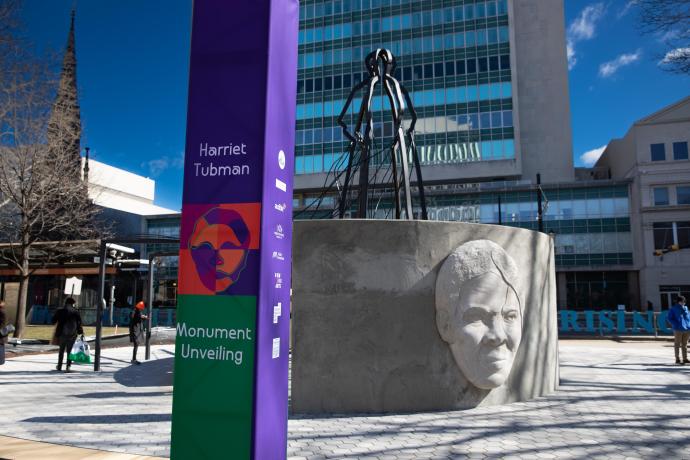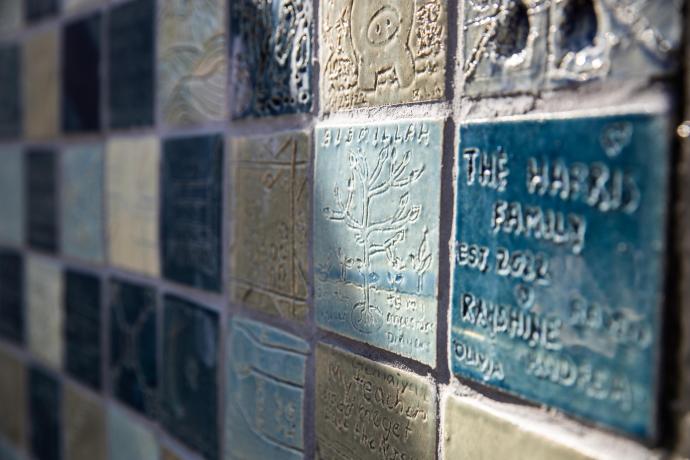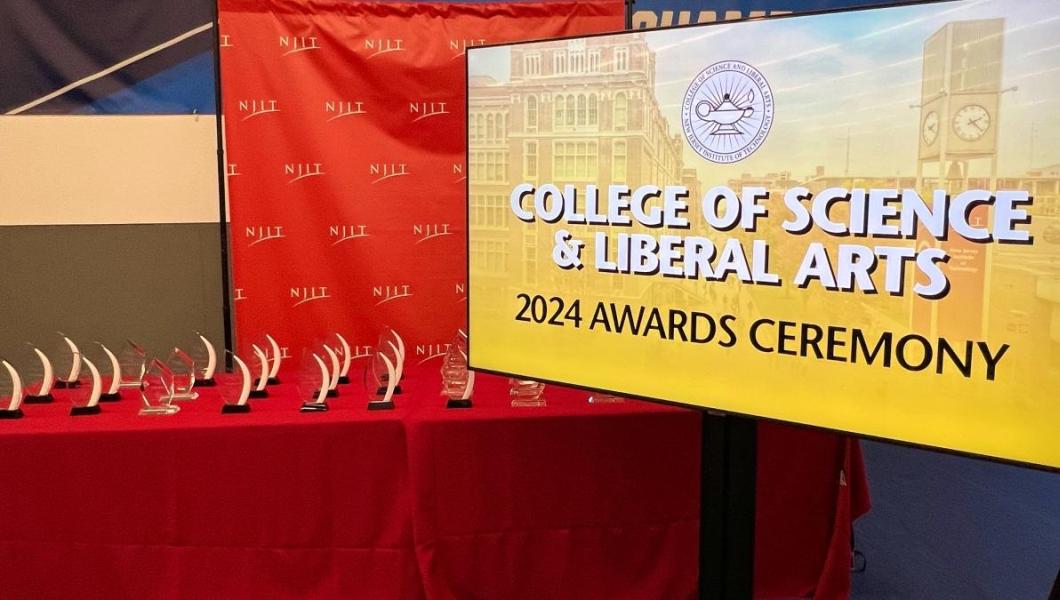Adebunmi Gbadebo '21 Shares Her Experience in the Creation of Newark's Harriet Tubman Monument

NJIT alumna, Adebunmi Gbadebo ‘21, played an important role in the unveiling of the Harriet Tubman Monument, located at the intersection of Washington and Broad Streets, in downtown Newark.
Gbadebo served as the community engagement apprentice, working closely with Nina Cooke John, the architect and designer of the monument. The monument, titled “Shadow of a Face,” will be the centerpiece of a community gathering space in the recently renamed Harriet Tubman Square.
“My role on the project was to assist Nina Cooke John in establishing and facilitating tile workshops, and audio workshops where we went out to all the different wards of the city of Newark and asked the community questions such as: ‘What is your liberation story? What is something that you struggle with and overcame? What is your North Star?’”
Community residents answered those questions through etchings and writings into ceramic tiles, which are now part of the physical wall. They also contributed to an audio portion of the monument, which connects their stories to Tubman’s.
As you walk through the physical monument, you will be able to also hear stories of Newark's history of liberation, abolitionist history and stories about Tubman’s life directly. Community stories are interspersed throughout, further entwining Tubman with the Newark residents.
“Truly connecting our present lives as citizens of Newark to the life of Harriet Tubman, so you're hearing all of us,” described Gbadebo.
Harriet Tubman’s legacy is so grounded in community.
“Nina Cooke John often talks about what inspired her to bring the community into this process, into this monument, learning about how the first time Harriet Tubman self-liberated herself and escaped the bondages of slavery, she looked around and she was free, but her family, her mother, her father, her brothers were still enslaved,” she said. “She literally risked her freedom to free her family and her community, and I think that type of legacy, that type of model, that none of us are free until we all are free, that is our responsibility to bring others along with us on our journey to liberation.”
The foundation of Gbadebo’s ability to use art and culture to shape the physical and social character of an environment was guided by her enrollment at NJIT’s Hub for Creative Placemaking. Her experience in the program formed a foundation for how she has thought about creative placemaking, and more specifically creative place keeping, in her career and in much of her creative endeavors.
“It is our way of using creative means in the arts to tell stories and to bring out stories of the city of Newark, that tell why the city is so beautiful,” she added. “And by taking that class, it really gave me more of an insight and a framework on this project and in my own respective career – to think through these different approaches in ways to tell histories and to really create space and keep place as I work in Newark, New Jersey and Philadelphia.”
“Like most of her coursemates who undertake the Certificate in Creative Placemaking course, Adebunmi came to us with a set of skills honed from her experience, education and early professional practice. In her case, she had established her arts medium and was represented by a gallery owner,” said Suzanne Ishee, director of NJIT’s Hub for Creative Placemaking. “Through the course, she discovered a more targeted focus that aligned with her full set of skills. Our study on creative placekeeping and trauma-informed placemaking, in particular, resonated powerfully for Adebunmi igniting a passion to both practice and lead this transformative process.”
Gbadebo’s works are included in the permanent collection at the Smithsonian National Museum of African Art, Smithsonian National Museum of African American History and Culture, the Minneapolis Institute of Art, the South Carolina State Museum, the Boston Museum of Fine Arts, the Newark Museum of Art, amongst others. She has presented in exhibitions across the US and internationally at the Dhaka Art Summit, Bangladesh, and the 1-54 African Art fair, London.
Other NJIT alumni have also worked on Tubman projects. In 2020, Hillier College of Architecture and Design alumni Paul and Cassandra Farnan planned and drew improvements to a 19th-century parish house formerly associated with the adjacent Macedonia Baptist Church in Cape May.
For more information about the making of the monument, historical background, and curricular materials, visit the Harriet Tubman Square website.



